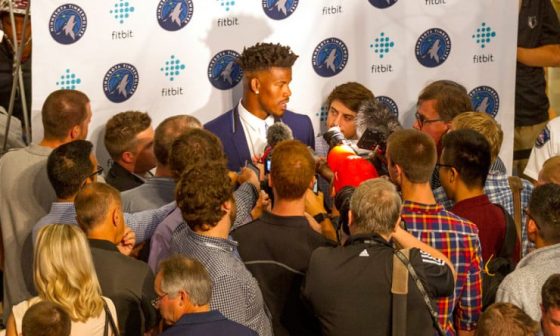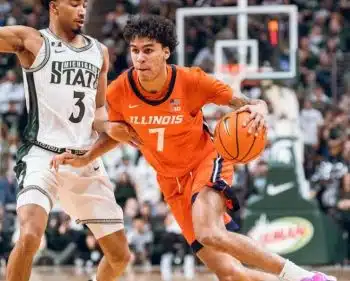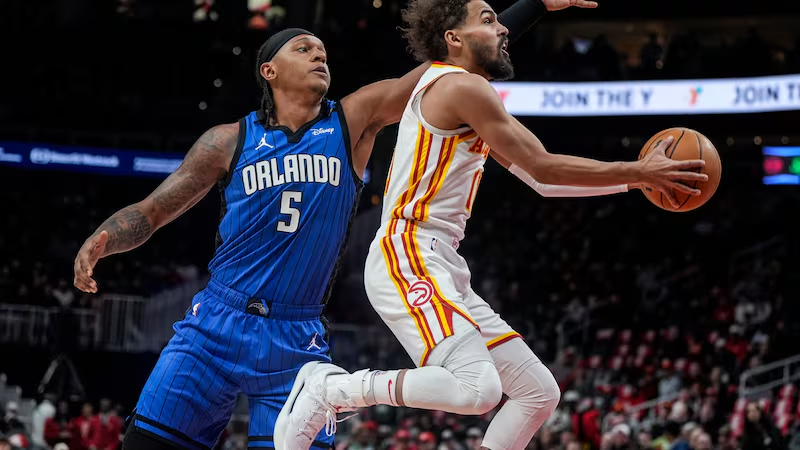NBA
NBA AM: Sourced Information Makes The World Go Round

Oh, How We Love Sources
Yesterday there was a tweet from a long-time and well-respected NBA writer, suggesting that LeBron James was “100% gone from Cleveland,” citing an unrepairable and untenable relationship with Cavs ownership. The tweeted report came via “sources close to” which is always a dubious tool writers almost have to use.
Before we get too far into this, and by way of full disclosure, this writer (me) uses the “sources” tool to help disseminate information that the person or persons involved simply don’t want to deal with in the court of public opinion.
Given how prevalent the “sources say” tool is used it’s important to understand how this kind of world works:
Agents
In the offseason, the largest source of “sourced” information comes from the agent community. While there are some agents, you have likely heard of such as Dan Fegan, Andy Miller (ASM Sports), B.J. Armstrong (Wasserman), Bill Duffy (BDA Sports), and Jeff Schwartz (Excel Sports), these are the top of the food chain in the agent world. However, the army of support agents that work under them or the smaller agents that have a small group of clients make up the biggest percentage of the agent community. They also make up the largest sewing circle of NBA information out there. These guys are usually talking with their clients daily and are interfacing with team personnel frequently. Many of which are trying to come up in the world and having information and being willing to share that information make them valuable—valuable to reporters and valuable to teams that need to know what’s real.
In the NBA, information is currency, and it often is used to garner favor.
It’s rare that top tier agents do much talking unless you are the elite of the elite. However, getting information from the next tier is pretty common, and it’s where the bulk of chatter comes from.
Teams
It’s easy to group NBA teams into one body. However, they are 30 different constructions with different rules and different leadership styles. General managers are rarely the source of rumors, however, they typically are the source for things that really clarify previous information. It is not uncommon for a GM to say, “I don’t want to be quoted on this, but here is what’s really going on,” or to reach out and say “Hey, I don’t want to be quoted on this, but that story you put out isn’t completely true” or “We’re really not doing that.”
Most NBA teams employ a small army of people, some with access to information for a number of job-related reasons. Whether it is the PR staff, the operations staff or the coaching staff, the touch points for team information is pretty deep. The problem with information from a team about their team is it usually is not accurate unless it’s in the framework of a denial.
Teams leverage the media to help their own objectives. Whether that’s drumming up interest in trades, smoke screens about draft prospects or free agents.
Teams are a good source for the internal dynamics of a team. It’s not uncommon for a team employee to share stories about practices run ins or on the road “side stories.” The “behind the scenes” stuff commonly comes from the team side.
It’s important to point out that a number of teams have started to really crack down on leaks of team information. One franchise had their staffers sign documents stating that at any time they may be asked to produce their cell phone and detailed cell records if it’s believed they are the source of information that’s gotten out.
With information being so critical to team success, controlling information is becoming a bigger point of emphasis. Given how quickly things get out in the social media world and how quickly the wrong information can create real damage for teams, it’s a real thing in NBA circles, especially if a key player surfaces in a rumor that’s not real.
Other Teams
Other teams are some great sources of information about other teams. Historically, the most noise in the trade market comes from teams not involved in the deal. This kind of information can be problematic because those parties usually are not playing an active role in the deal. They are also usually the source for stuff that took place weeks ago that may be long dead.
The tone of a story can often tip you off on who it came from. Teams that are not pursuing a player may be more casual in how they describe the player or the value of a deal. It’s pretty uncommon for a team actively trying to land a player to talk up that player or being overly negative.
Equally, the smart teams understand that the NBA is a small world and the player you talk badly about one year may end up on your roster at some point in the future. So trashing him to a reporter can come back to haunt you later.
Like agents, there is a small army of support people that use the information to garner favor, especially in a world where the Assistant GM or the Director of Player Personnel has eyes on running his own team one day and having public support doesn’t hurt the equation.
Own Team’s Players
It is fairly common for players on a roster to share information about players on their team. Players are usually the worst source for trade-related commentary, but usually the best source for how a player feels about their situation, what they are telling their teammates and how they interact with coaches and executives.
Players are pretty protective of other players. They also tend to live in a bubble because of their lifestyle, especially in-season. Like teams, not all players are open to sharing, but given that reporters and players tend to spend the most time together, that’s typically the source for things a player may share in a casual conversation and not in a traditional on the record interview type session.
Other Team Players
Players on other teams are also a big source of information. Keep in mind a lot of players share similar agents or agencies. Many players have friendships outside their own team dynamic. Players often train with each other, and those players usually will chime in on things. Again, in most situations, it’s casual conversations not on the record quotes, which is why they are typically presented as “sources.”
A fun example of this was when Dwight Howard ultimately made his decision to leave the Lakers for Houston, he happened to have worked out with a player on another team and, in casual conversation, told that player he was picking Houston. That player shared that information with others, and that’s how the information got out ahead of Howard’s planned release.
The Peripheral
The peripheral is usually the problem in the “sourced” information world. These are those people that love to talk, but are generally not directly connected to the subject. This is where the hearsay comes from, and it’s typically where the most inaccurate information comes from.
The one thing worth saying is it’s fairly common to accuse a reporter or a writer of “making it up,” but that’s usually never true, especially not from reputable writers and reporters. What does happen, though, is a reporter hears something from a credible “peripheral” source, and that source ends up being wrong.
A good example of this was something that happened to me this year at the NBA draft, I was talking with a very well-connected agent in the business, who used to be a part of a larger agency that had represented a player who was being actively shopped around the draft. This agent spoke with people in that player’s camp hours before our conversation, and it turned out the teams being mentioned most heavily in the hours leading up to the draft were no longer engaged in talks. According to this agent, two new teams were the front runners in the hours leading up to the draft.
From my perspective, this was a highly credible source, who explained how he got the information and from who. This is the definition of a “peripheral” source. He was not directly involved, did not have a seat in any conversation, but knew all the details and was someone I have known for years and is always hyper-credible.
Would you run that? That’s something every writer or reporter has to weigh.
Journalistically, you try and validate that with another source, but in the real-time world of news, that’s not always as easy as you’d like. Especially knowing that the teams involved are not going to comment, the player involved usually doesn’t know the minute-by-minute.
It’s not easy, and that’s typically why a writer or reporter may put something out that doesn’t end up happening as described or ends up being denied later.
This is what makes writers like Adrian Wojnarowski so special in this space, given how accurate he has been over such a long stretch of time.
The purpose here wasn’t anything more than helping you understand how rumors and “sourced” information comes about. By no means is it meant to agree or disagree with anyone’s reporting or reporting style, simply to explain how people in this business get the information they get and why it often goes unnamed and labeled “sourced.”
It’s also important to understand the role of the writer and reporter is to be your eyes and ears. Our mission here at Basketball Insiders is to tell you the stories not being told, to add value to the discussion with our wealth of experts and experience. Not everyone is driven by great stories, but that’s what we strive to do every day.
Sometimes we need to protect our relationships with “sources” say commentary, mainly because those relationships power what we do.
Hopefully, this helps you understand the business. You can always decide for yourself who you want to believe and not believe.
More Twitter: Make sure you are following all of our guys on Twitter to ensure you are getting the very latest from our team: @stevekylerNBA, @MikeAScotto, @LangGreene, @EricPincus, @joelbrigham, @TommyBeer, @MokeHamilton, @jblancartenba, @Ben_Dowsett, @CodyTaylorNBA, @SpinDavies, @BuddyGrizzard, @JamesB_NBA, @DennisChambers_ and @Ben__Nadeau .











